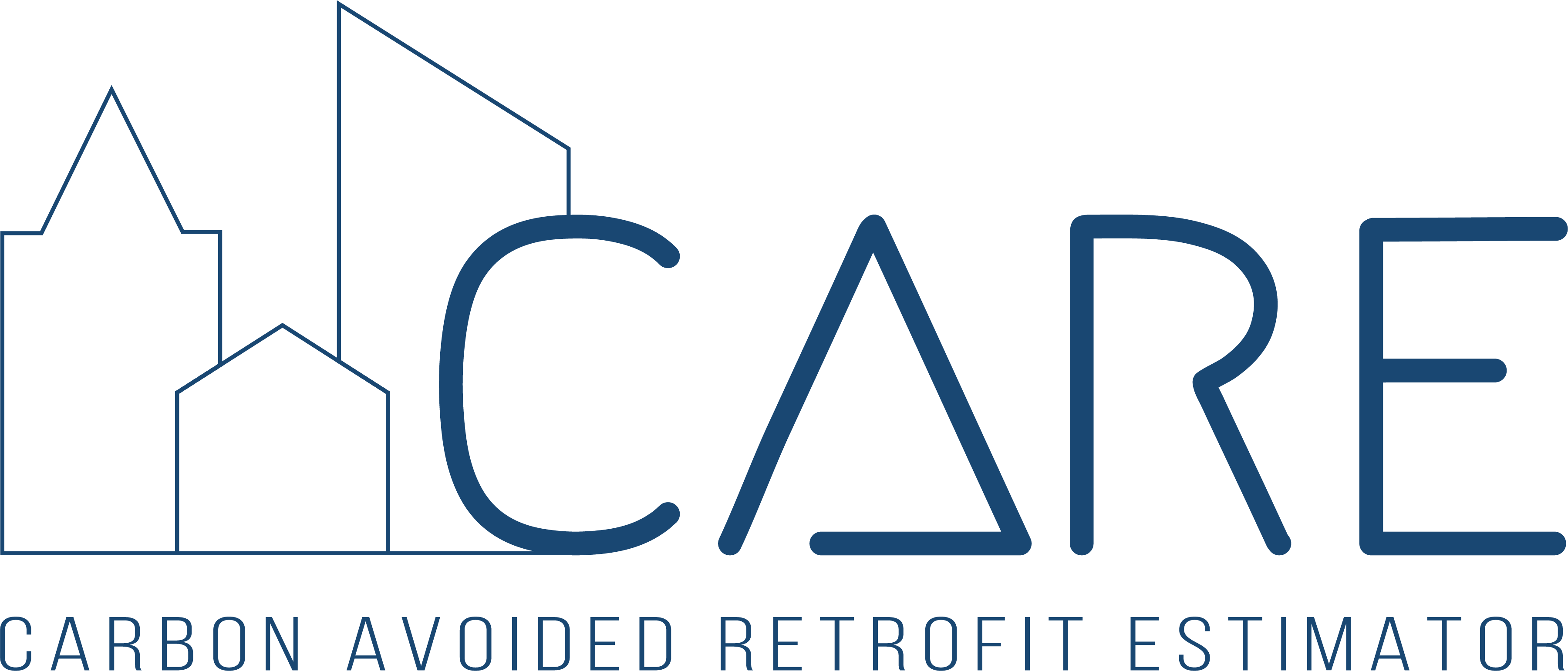The CARE (Carbon Avoided: Retrofit Estimator) Tool is used for estimating and comparing the embodied, operating, and avoided carbon impacts and benefits of reusing and upgrading existing buildings or replacing them with new construction.
Leveraging Existing Buildings
In most cases, the greenest building is the one that already exists, but that wisdom has not previously been proven with comprehensive data, and the carbon benefits of reusing existing buildings are rarely incorporated in climate action plans, carbon tracking, or design decision-making. This is a significant missed opportunity for the preservation, planning, design, and policymaking communities to quantify their impact potential and make the strongest case for building reuse. The CARE (The Carbon Avoided Retrofit Estimator) Tool is changing this. It provides decision-makers with the capability to estimate the carbon benefits of reusing and upgrading existing buildings compared to replacing them with new construction.
”The most direct possible way to reduce embodied carbon is to reuse and upgrade an existing building rather than replacing it with new construction. The easy-to-use CARE Tool will be an important contribution helping building designers address these upfront emissions with far more urgency, early in the design process, and providing the data and analysis required to make a compelling case for reuse to clients and stakeholders.
Andrew HimesDirector of Collective Impact, Carbon Leadership Forum
The existing built environment is a key asset to achieving substantial, near-term carbon reductions. Leveraging the buildings we already have helps avoid embodied carbon emissions from new construction, and upgrading and electrifying our existing buildings reduces building operational emissions, which make up 27% of total global emissions. There is also a critical time component to reusing what we already have. For the buildings built between now and 2050, more than half of their carbon emissions will be from embodied carbon. It’s estimated that reusing and retrofitting buildings saves 50% to 75% of the embodied carbon that would be emitted by constructing similar new buildings, especially when the carbon intensive parts of the building – the structure and envelope – are reused.
Building reuse is particularly relevant in areas of the world with large existing building stocks and significant numbers of underutilized buildings. Reusing these buildings reduces the need for new construction; improving their operational performance lowers their operating emissions.
The benefits of reusing and improving existing buildings extends beyond carbon reductions. The built environment consumes vast amounts of natural resources that come with significant environmental impacts – loss of habitat, deforestation, pollution. Reusing and renovating buildings requires far fewer resources than new construction. Building reuse also supports and revitalizes existing neighborhoods, creates local jobs, builds financial equity, increases neighborhood resilience, and empowers communities. Investment in communities that have been subjected to historic discrimination has the potential to bring sustainable and equitable climate solutions that also have meaningful economic outcomes for the most impacted communities.
Receive updates about CARE Tool development:
Reusing and retrofitting buildings can save 50% to 75% of the embodied carbon that would be emitted by constructing similar new buildings.
What does the tool do?
The CARE Tool estimates the operational and embodied carbon emissions associated with reusing and upgrading an existing building or replacing it with new construction.
”The CARE Tool is the first reliable embodied carbon calculator I’ve used that can quickly and easily compare the multiple design options for renovating an existing building.
Tiffany Broyles YostAssociate Principal, Director of Sustainability and Resilience, GBBN
Who is the tool for?
The CARE Tool can be used by policymakers, planners, building owners, developers, heritage building officers, architects, and others who are interested in a pre- or early-design, high-level assessment of the total carbon emissions of building reuse versus replacement.
- policymakers
- planners
- building owners
- developers
- heritage building officers
- architects
- educators
“CARE provides clarity to the value of existing buildings and goals we must set for energy and materials that will lead to a lower carbon impact.”
Julia Siple
Principal and Director of Sustainability, Quinn Evans Architects
How does the tool work?
Users provide information in four categories:
- General project information such as location and building use type(s).
- Information about the renovation using drop-down menus to describe scope, such as percentage of structure upgraded or interior finishes retained; information about building additions constructed as part of a reuse scenario; and energy and emissions targets and projections for the renovation.
- New building information based on typical construction typologies, and energy and emissions targets and projections for the new building.
- Special conditions such as poor soil or seismic zone location.
The CARE Tool then calculates carbon emissions using built-in embodied and operational carbon assumptions. The outputs are visualized as total embodied and operational emissions over a specified timeframe as well as cumulative emissions over time, for three scenarios: the existing building, the renovated building, and the new construction. Results can then be compared to determine the lowest total-carbon approach.
Proposed future additions to the tool include the integration of projected future electricity grid emissions intensity data, the creation of a feature for comparing multiple reuse and new construction scenarios for a single project, the development of a CARE for Portfolios feature, and the expansion of the tool for easier and more accurate international use.
How is the tool funded?
The CARE Tool is currently being funded by grants and donations.
The CARE team is currently seeking additional support for tool development.
Future development plans include:
- The implementation of a print feature
- The creation of feature for comparing multiple reuse and new construction scenarios for a single project
- The development of a CARE for Portfolios feature
- The expansion of the tool for easier and more accurate international use
Project Supporters
Project Collaborators
Founding Project Developers
Larry Strain | Siegel & Strain Architects
Lori Feriss | Goody Clancy
Erin McDade | Architecture 2030










